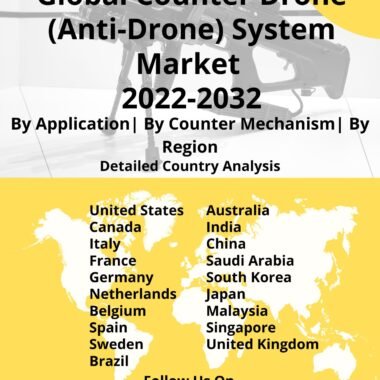Description
Communication has been one of the most essential variables in determining victory since the beginning of military operations. Communication with your allies while still understanding where your opponents are is one of the most critical parts of warfare. Military communication has advanced over time, from burning arrows, drumbeats, smoke signals, and messenger pigeons to modern satellite-enabled communication technologies. In the military, effective and secure communication is based on a sophisticated network of facilities, personnel, and protocols that allows many parties to communicate data. Supporting the communications revolution and switching to a new generation of technical solutions considerably reduces the hazards to soldiers on missions.
The US Army is currently pursuing its modernization strategy, which recognizes that information and its effective application are crucial to future military wins. Future battlefields will be vast digital networks with massive amounts of data for commanders and combatants to exploit in real time. The goal is to deliver the appropriate data at the appropriate time and place. The premise behind network-centric transformation is that the military will use new communications technologies to improve the way it fights. Single-purpose communications systems serving the needs of certain arms or specific sorts of military forces are projected to wither away as multipurpose communications networks become more popular.
Military forces have traditionally required dedicated tactical radio networks due to security and reliability considerations. The three most prevalent forms of tactical radios are handheld radios, manpack radios, and vehicle-mounted radios. Handheld radios have a limited range and can only reach a small number of warfighters. Manpack radios have a medium transmitting capability and are capable of communicating with warfighters over a distance of a few kilometers. Vehicle-mounted radios have a large transmission capacity and can communicate over long distances because they are not limited by the batteries carried by soldiers in the field. Vehicle-mounted radios, unlike handheld and manpack radios, can have various antenna options.
Making man pack units auto-tuning has been a recent product development to minimize operator interference, such as the newly updated man pack, the KMW1031. This device outputs a minimum of 20 Watts for just 1 Watt of input, making it compatible with practically any single or multiband “hand talkie” radio. In the same topographical circumstances, this high gain unit (minimum of 13dB) would have up to four times the operational range of a 1-Watt portable unit. A new power supply module, which was recently upgraded, allows the device to work with both 12 and 24 Vdc supplies. Vehicle power spike suppression circuits are also included, allowing the device to be powered from vehicle supply without concern of power surge interruption. The new unit is smaller and lighter than the old one, and it uses about half the amount of current, allowing it to be powered by a single tactical battery like the UBI-2590 or anything similar.
On the modern battlefield, tactical radio networks encounter a difficult environment. In addition to the fluctuations in the wireless transmission environment, the radio must coexist and compete with a high density of emitters with different waveforms. Cognitive radio is seen as a potential solution for reducing interference and permitting more flexible and responsive radio resource allocation. Cognitive radio was developed to enable adaptive spectrum use by combining spectrum sensing capabilities and decision-making logic into radio devices.
By breaching the traditional rules of tightly controlled wireless communications and spectrum allocation, cognitive radio aims to boost overall spectrum usage and efficiency. In a cognitive radio, the decision-making logic is contained in the cognitive engine, which may configure waveform, operating frequency, protocols, and the network. A cognitive radio continuously monitors its own configuration, efficiency, and environment and uses this information to improve its performance; it is this trait that qualifies it for use in the defence area.
The rise of Industry 4.0 has expanded the amount of data that can be collected during a conflict. Unlike commanders in World War I, who were limited by the amount of paper available, the military can now collect vast amounts of real-time data that can be vital to a successful strategy owing to Industry 4.0. Sensors are military devices that offer information such as terrain and meteorological information, as well as civilian, critical infrastructure, and friendly force boundaries. Various categories and types are radar and radio, optical/infrared/ultraviolet (UV) sensors, and magnetic detectors that make use of one type or another of electromagnetic radiation. Another type is sonar that involves sound in water. Particle beams, biological sensors, chemical sensors, and nuclear materials detectors are some others type that are used in defence area.
Scientists and engineers from the C5ISR Centre examined early research and development projects as well as emerging industry solutions during the annual Network Modernization Experiment (NetModX 21), which took place from May 17 to July 30, 2021. The goal of NetModX 2021 is multi-domain lethality via integrated automated and protected communications. The CS21 programme, which includes ITN components, is a collection of equipment and capabilities for the US Army. Standard programmes, MTAs, and commercial-off-the-shelf (COTS) products are all included. ITN and COTS products include single channel tactical radios, two channel headsets, variable height antennas, line-of-sight backhaul radios, tactical radio gateways, and mobile broadband kits.




